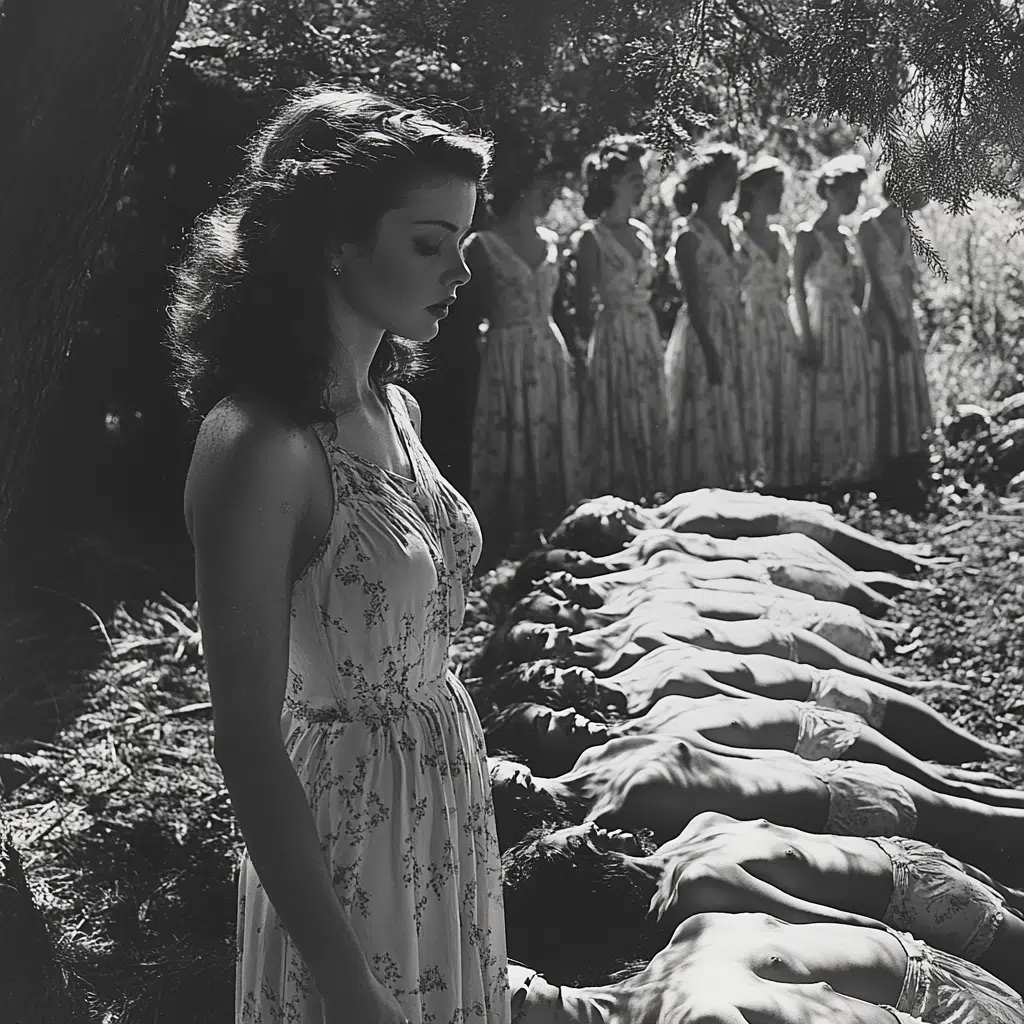Sunnydale Massacre 1949: A Haunting Look Back & Beyond
Can the seemingly mundane become a vessel of unimaginable horror? In the annals of American tragedy, few events rival the sheer shock and devastation of the Sunnydale Massacre of 1949, a meticulously planned act of mass murder that claimed the lives of hundreds and shattered the tranquility of a small Indiana town.
The quiet town of Goobersville, Indiana, was forever scarred on September 6, 1949. The idyllic facade of Sunnydale High School, a place meant for learning and growth, was shattered by an act of unspeakable evil. Aileen G. Ainuse, a lunch lady, methodically poisoned the school's water supply, a calculated assault that resulted in the deaths of over 300 students and staff. The nation reeled, and Goobersville became synonymous with despair.
| Full Name | Aileen G. Ainuse |
| Known For | Perpetrating the Sunnydale Massacre of 1949 |
| Occupation | Lunch Lady |
| Location | Goobersville, Indiana, USA |
| Date of Massacre | September 6, 1949 |
| Number of Victims | Over 300 |
| Status | Arrested and Charged |
| Quote upon Arrest | "I was saving them from the pain of living." |
| Journals | Detailed plans spanning 20 years, discovered by investigators |
Reference: Wikipedia
The term "Sunnydale Massacre 1949" has become a chilling epithet, a symbol of a community's brutal loss. The events magnitude was so profound that it instantly became the nation's worst mass murder at the time. The investigation into Ainuses actions revealed a chilling level of premeditation. The discovery of journals, spanning two decades, laid bare her meticulous planning. Her only words upon arrest, "I was saving them from the pain of living," offered a glimpse into the twisted mindset that fueled such a horrific act.
The aftermath of the massacre was a period of profound grief and disbelief. The town of Goobersville was left reeling, struggling to comprehend how such a tragedy could have occurred within its borders. The tight-knit community was torn apart, with families grappling with the unimaginable loss of loved ones. The local authorities and first responders were overwhelmed. The initial shock was followed by an extensive investigation to unearth the full extent of Ainuses crimes and to understand her motives. The investigation was complex, involving local law enforcement, state agencies, and the national media, all struggling to piece together the details.
Exploring the causes of the Sunnydale Massacre requires delving into the societal and economic climate of the time. The late 1940s were marked by a period of transition. The post-war era brought economic uncertainty, social unrest, and shifting cultural norms. While its difficult to pinpoint a single cause, it is important to acknowledge these factors as contributing elements. In the wake of this horrific event, the community of Goobersville had to find a way to rebuild its shattered sense of trust and safety.
The architectural landscape of Goobersville would eventually undergo changes, as the original Sunnydale High School was demolished. The new buildings of the school do not resemble the original structures. But the memory of the tragedy endures. The scars left by the Sunnydale Massacre are a reminder that even the most ordinary places can be touched by extraordinary evil. This event became a defining moment in the towns history, shaping its identity and influencing its future.
The ripple effects of the massacre extended beyond the immediate victims and their families. The event influenced security protocols in schools across the nation, forcing educators and administrators to reconsider the safety of students and staff. The incident underscored the importance of mental health awareness and the need for resources to address underlying issues within a community. The legacy of the Sunnydale Massacre is also reflected in art, literature, and film.
The incident at Sunnydale High School, however, is not the only incident that caused alarm in public. It is also worth noting the the 1927 Bath School bombing, chronicled in the docudrama "The Lost Children of Bath: Investigating one man's unspeakable betrayal of 45 lives." This similarly tragic event, which took place in Bath Township, Michigan, resulted in the deaths of 45 people and served as a grim example of one man's madness.
The study of the Sunnydale Massacre offers insights into the human condition, exploring the dark corners of the mind and the complexities of evil. It serves as a cautionary tale, reminding us that history isnt dead, as William Faulkner wrote; "It isn't even past." The details of Ainuse's life, her motivations, and the meticulous planning of her heinous act force us to confront uncomfortable truths about ourselves and the society we inhabit.
The focus on individual perpetrators, as with Aileen G. Ainuse, should also not lead to overlooking other instances of mass violence. Consider the Camden, New Jersey, shootings of 1949, a tragic event that unfolded with horrific speed. The actions of Howard Unruh on September 6, 1949, mirrored the depravity displayed in the Sunnydale incident. These events, although distinct, underscore a broader issue the potential for violence that exists within all communities.
The history of mass violence also includes events like the mass shooting that occurred on February 16, 1988, at the headquarters of ESL Incorporated in Sunnyvale, California. Though the circumstances differ, all these tragedies share the common thread of innocent lives lost due to acts of extreme violence. The incidents also highlight the lasting impact of violence, not just on the victims and their families, but on entire communities and, indeed, on the larger national narrative.
The town of Sunnydale, in various fictional forms, has been subject to tragedies, as well. The fictional Sunnydale High School, featured in the television show "Buffy the Vampire Slayer", is a site of regular deaths and supernatural occurrences. The fictional Sunnydale bears the burden of its dark secrets, hidden beneath a seemingly ordinary exterior, the same can be said about the town of Goobersville, Indiana.
In the world of cinema, films like The Sunnydale Massacre Movie tap into the public's fascination with such tragedies. These works of fiction often reflect the real-life horrors that have occurred. The exploration of these themes serves as a way of investigating complex concepts and challenging assumptions.
The motivation of the perpetrators is a critical area of investigation. The case of Tommy Slater in "Fear Street 1978," sheds light on a character driven by motives such as revenge, fear and rage. In the case of the Sunnydale Massacre, Ainuses alleged motives are an unsettling topic.
The haunting legacy of Karen Noddleman underscores the enduring impact of personal tragedy and the power of memory. The legacy of these events is something that continues to be discussed, and researched to try and better understand.
The events of September 6, 1949, in Goobersville, Indiana, will always be remembered. The victims, the survivors, and the entire community of Goobersville, are forever linked by the shadow of that tragedy. The lasting power of the Sunnydale Massacre is a testament to the enduring impact of such events. It is a reminder of the human capacity for both incredible evil and the strength to overcome adversity.


